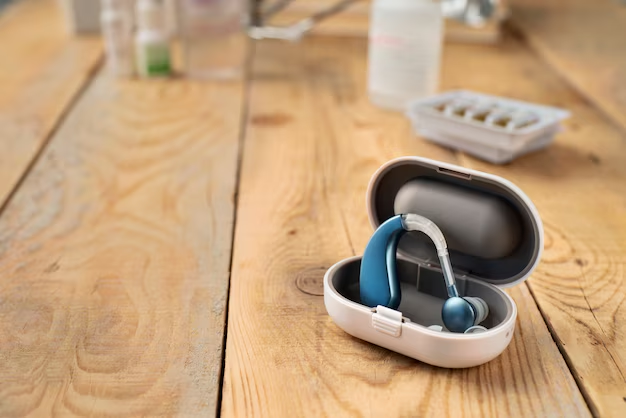Effortlessly Transition from Hearing Aids to Speaker on iPhone: A Step-by-Step Guide
Switching from hearing aids to using your iPhone's speaker can be a quick, useful adaptation when required. Whether you're at home, in the car, or simply need to use your phone differently for a moment, knowing how to toggle between these audio output methods can make your day-to-day life much easier. Here’s how you can do it effortlessly.
Understanding Your iPhone’s Audio Output Options
With the evolution of smartphone technology, iPhones now offer diverse audio output options. This includes connecting directly to hearing aids using Bluetooth technology, using AirPods or similar devices, or simply utilizing the phone’s built-in speaker. Switching between these modes can be simple if you understand your device’s settings.
Bluetooth Hearing Aids: A Quick Overview
Bluetooth-enabled hearing aids allow users to experience seamless audio directly from their phone to their hearing device. This connection is beneficial, offering clear sound quality that bypasses environmental noise. However, there may be instances where shifting to an open output like a speaker is preferable.
Advantages of Bluetooth Hearing Aids:
- Direct Audio Streaming: Eliminates background noise for clearer communication.
- Multiple Device Support: Connects to various devices beyond just iPhones, such as televisions and other smart devices.
Limitations:
- Battery Consumption: Consuming more battery life from both the iPhone and the hearing aids.
- Connectivity Dependency: Needs consistent Bluetooth connection.
Built-in iPhone Speakers
The iPhone's built-in speakers are conveniently versatile, offering sound output without additional devices. They provide a practical solution for hands-free use when precise audio direct to hearing aids isn't necessary or desirable.
Advantages of using iPhone Speaker:
- Ease of Use: No need to manage additional devices or connections.
- Shared Audio: Useful for group settings where multiple people need to hear the sound.
Disadvantages:
- Sound Quality: Not as clear as direct streaming to hearing aids.
- Environmental Noise: Hard to avoid background noise.
How to Switch from Hearing Aids to Speaker on iPhone
Step-by-Step Instructions
Access the Control Center:
- Swipe down on the upper-right corner of the iPhone screen to open the Control Center. On older iPhones, swipe up from the bottom.
Manage Audio Output:
- Tap on the audio card's upper-right corner to view the list of connected audio outputs. Here, you should see your hearing aids, any other connected Bluetooth devices, and the iPhone's speaker.
Select iPhone Speaker:
- Choose “iPhone” to switch the output to the speaker. You will immediately hear sound from the built-in speakers instead of your hearing aids.
Verify Successful Switch:
- Play a sound or call someone to ensure that the audio is coming from your iPhone speaker correctly.
Tips for a Smooth Transition
- Update Your iPhone: Ensure that your iOS is up to date for the latest features and improved compatibility with hearing aids.
- Check Bluetooth Settings: Before switching, confirm that hearing aids are paired correctly within your Bluetooth settings.
- Optimize Volume Settings: Adjust the volume on your iPhone accordingly to prevent strain when listening through the speaker.
Practical Scenarios for Switching
Understanding when to switch between hearing aids and the speaker enhances convenience. Here are typical scenarios:
- Driving: Use the speaker when receiving hands-free calls, complying with safety regulations.
- Group Conversations: Switch to speaker to allow others in the room to participate in a phone call.
- Working Out: During exercise, relying on the speaker may be more comfortable than wearing hearing aids continually.
When to Return to Hearing Aids
- Noisy Environments: In such settings, switching back to hearing aids ensures more isolated and clearer sounds.
- Privacy Concerns: In places where confidentiality is important, direct streaming to hearing aids is a valuable feature.
Exploring Additional Audio Options
Using AirPods and Other Bluetooth Devices
Alternatives to hearing aids and the iPhone speaker include AirPods or similar wireless earbuds. They bridge the gap between direct hearing aid connectivity and speaker output by offering a private yet untethered audio experience.
Switching to AirPods:
- Make sure your AirPods are charged and paired.
- Open Control Center, tap the audio output, and select your AirPods.
Advantages:
- Convenience: Quick transitions with a tap can be ideal for varied daily activities.
- Sound Isolation: Provides better sound isolation than the phone speaker, without the full effect of hearing aids.
Summary and Key Takeaways
Switching audio output from hearing aids to iPhone speaker is a straightforward process that offers flexibility based on user preferences and situational needs.
- 📱 Use the Control Center for easy audio management between Bluetooth devices and the iPhone speaker.
- 🔄 Regular Checks: Ensure Bluetooth settings and connections are functioning properly for smooth switching.
- 💬 Consider the Setting: Use speakers in open, casual settings, and switch back to hearing aids in private, noisy, or confidential environments.
By understanding how to maneuver these settings with ease, you maintain the autonomy to interact with your device in a way that best suits your lifestyle and hearing needs. With technology’s ever-present role in our lives, maintaining control over these elements is crucial for accessible and enjoyable communication.

Related Topics
- a Plus Hearing Aid Centers
- a Real Pain Showtimes Near Centerville
- Are Airpods Bad For Your Ears
- Are Apple Second Generation Airpods Hearing Aids
- Are Audien Hearing Aids Just Amplifiers
- Are Costco Hearing Aids As Good As Others
- Are Costco Hearing Aids Good
- Are Hearing Aid Domes Interchangeable
- Are Hearing Aid Subscriptions Worth It
- Are Hearing Aid Tax Deductible